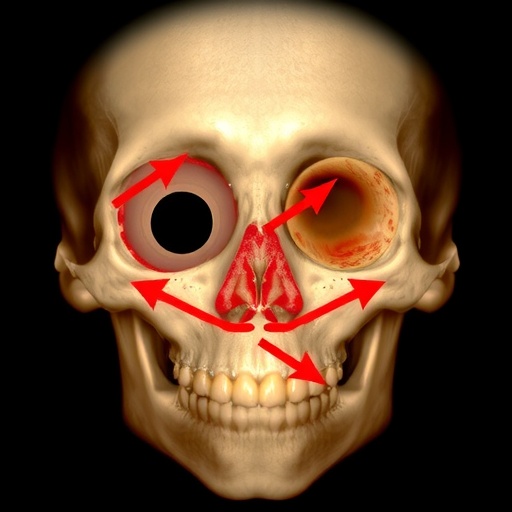In an era where artificial intelligence is reshaping the landscape of drug discovery, researchers are increasingly leaning towards innovative methodologies that promise both efficacy and safety in medicinal chemistry. A recent study led by Mubeen et al. examines the complexities surrounding doxycycline, a well-known antibiotic, through the lens of artificial intelligence-assisted drug design. At the core of their research is the meticulous investigation of the toxicity related to this drug, especially as it pertains to the 16S rRNA methyltransferase gene, a pivotal element in bacterial resistance mechanisms.
Doxycycline, a member of the tetracycline family, has been widely utilized against a spectrum of bacterial infections. However, its role transcends mere infection control, as it is also being explored in various off-label therapeutic scenarios. The most significant of these involves its ability to modify gene expression patterns in bacteria, thereby influencing their susceptibility to other antibiotics. This dual functionality becomes increasingly critical in the face of rising antibiotic resistance, urging scientists to re-evaluate existing drugs and explore novel applications.
The research presented by Mubeen and colleagues taps into this pressing need. Their study utilizes cutting-edge artificial intelligence algorithms to predict potential toxicity outcomes associated with doxycycline application’s scope as a drug design tool. These AI systems analyze vast databases and biochemical interactions, identifying patterns that human researchers may not readily recognize. This not only expedites the drug discovery process but also heightens the predictability of adverse effects, thereby paving the way for safer therapeutic practices.
At the heart of this study is the analysis of the 16S rRNA methyltransferase gene. This gene plays a significant role in conferring antibiotic resistance in bacteria by altering the target site of antibiotics, effectively rendering them less effective. The researchers outlined how doxycycline can play a dual role: It can combat certain bacterial strains while simultaneously escalating the risk of resistance development when misused or over-prescribed. This paradox is at the forefront of the urgency to develop a more profound understanding of the genetic expression modifications caused by doxycycline.
The insights gained through AI-assisted drug design reveal the potential pathways through which doxycycline can impact bacterial gene expression. Mubeen et al. detail several molecular pathways that doxycycline influences, thereby cascading into significant effects on bacterial pathophysiology. It is paramount to note that AI does not replace the need for empirical studies but rather complements them, providing a digital framework that informs hypotheses and experimental designs.
Furthermore, the integration of artificial intelligence into pharmacology highlights a more profound narrative about the future of medicine. By establishing predictive models that can forecast toxicological outcomes, the pharmaceutical industry could significantly decrease the time and cost associated with drug development. This is particularly salient in the context of public health emergencies, as seen during the COVID-19 pandemic, where rapid drug development became a cornerstone of response efforts.
In exploring the toxicity assessment aspect, Mubeen and colleagues utilized a multifaceted approach that encompasses both in vitro and in silico methods. In vitro studies offer a glimpse into the cellular responses to doxycycline at various concentrations, while in silico models simulate these interactions at a molecular level. This dual-pronged strategy fosters a more comprehensive understanding of how doxycycline interacts with target genes and cellular systems, thereby elucidating the potential risks involved.
A highlight of this research is its commitment to transparency and reproducibility. The methodologies adopted by the researchers are meticulously documented, ensuring that findings can be replicated and validated by independent laboratories. This element of verification is crucial in scientific endeavors, as it fortifies the credibility of results, especially in an age where misinformation can quickly proliferate.
Yet, while the benefits of doxycycline are well-documented, the risks associated with its misuse cannot be overlooked. The study emphasizes the importance of proper prescription practices and public awareness regarding antibiotic utilization. Misguided use of doxycycline not only threatens its current efficacy but may also contribute to broader implications for public health through the propagation of resistant bacterial strains.
Equally, the role of artificial intelligence in understanding these complexities extends beyond antibiotic applications. The versatile algorithms developed can be repurposed or adapted for other pharmacological investigations, thereby transforming the way researchers approach drug discovery holistically. By leveraging these tools effectively, the scientific community can enhance its capabilities in addressing some of the most pressing health challenges faced today.
Ultimately, Mubeen et al. underscore the importance of interdisciplinary collaboration in achieving advancements in pharmacology. The synthesis of artificial intelligence, biotechnology, and pharmacology emerges as a formidable force against diseases previously deemed resistant to treatment. This confluence of technology and medicine embodies the future trajectory of healthcare, which promises to deliver innovative solutions to age-old problems.
With the publication of this study in BMC Pharmacology and Toxicology, a crucial dialogue is opened regarding the intersection of artificial intelligence and traditional pharmacological practices. As the research community digests these findings, one must observe how they inform subsequent studies and public health policies, shaping a more enlightened perspective on antibiotic usage and safety in the years to come.
In conclusion, the work of Mubeen, Rafiq, Khan, and their colleagues serves as a vital reminder of the evolving nature of drug discovery. By placing emphasis on safety alongside efficacy, especially through pioneering methodologies like artificial intelligence-assisted drug design, it becomes evident that we stand on the brink of a new era in pharmacology—one that fundamentally alters our understanding of how we combat bacterial infections and ensure the longevity of antibiotic effectiveness.
Subject of Research: Doxycycline-aided artificial intelligence-assisted drug design targeting candidate 16S rRNA methyltransferase gene.
Article Title: Toxicity assessment of doxycycline-aided artificial intelligence-assisted drug design targeting candidate 16S rRNA methyltransferase gene.
Article References:
Mubeen, H., Rafiq, N., Khan, M. et al. Toxicity assessment of doxycycline-aided artificial intelligence-assisted drug design targeting candidate 16S rRNA methyltransferase gene.
BMC Pharmacol Toxicol 26, 195 (2025). https://doi.org/10.1186/s40360-025-00875-6
Image Credits: AI Generated
DOI: https://doi.org/10.1186/s40360-025-00875-6
Keywords: Artificial Intelligence, Drug Design, Doxycycline, 16S rRNA Methyltransferase, Toxicity Assessment, Antibiotic Resistance, Public Health, Pharmacology.
Tags: 16S rRNA methyltransferase geneAI-driven drug discoveryantibiotic resistance mechanismsartificial intelligence in medicinal chemistrydoxycycline toxicity assessmentgene expression modification in bacteriainnovative methodologies in drug designnovel applications of doxycyclineoff-label therapeutic uses of doxycyclinepredicting drug toxicity outcomesre-evaluating existing antibioticstetracycline antibiotics applications





